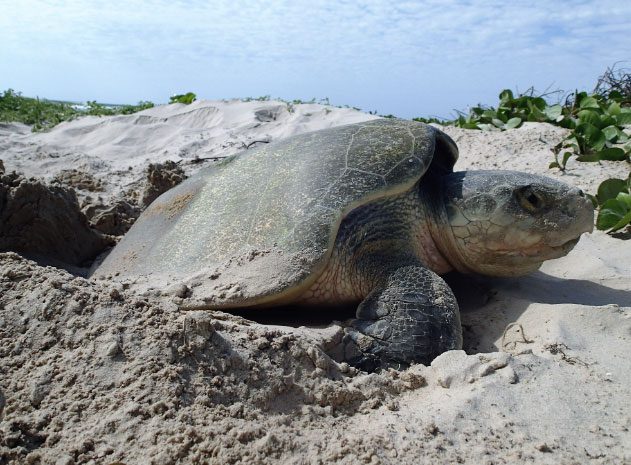Kemp’s Ridley, the rarest sea turtle species in the world, recently surprised scientists by nesting on a beach in Texas, USA.
According to Newsweek, around 45 Kemp’s Ridley turtle eggs were discovered on Magnolia Beach in Calhoun County, Texas, this month. This species is the smallest and rarest among sea turtles.

A female Kemp’s Ridley turtle on Padre Island, Texas, USA – (Photo: NPS)
The discovery of these turtles on Magnolia Beach coincided with International Sea Turtle Week, which takes place annually from June 8 to June 16.
Dr. Pamela Plotkin, a marine turtle biologist and director of the Texas Sea Grant Institute, stated that this rare finding suggests there may be additional undiscovered nests along the Texas Gulf Coast.
“This has never happened in modern times. Sea turtles typically nest on barrier island beaches in Texas, so seeing a nest on an inland Gulf beach is very rare. Many kilometers of Gulf coastline along Texas are uninhabited, so sea turtles may be nesting on these beaches more frequently and going undetected,” Plotkin noted in a statement released by the Department of Geosciences at Texas A&M University.
This statement emphasized that the discovery is a “conservation success.”
Currently, the turtle eggs have hatched, and the hatchlings have successfully made their way to the water. Humans assisted the turtles during their journey from the sand to the sea.
“For sea turtles, the post-hatch stage is a fight for survival. In the first moments of their lives, hatchlings must quickly move from their nests on the sand to the water’s surface, helping them avoid predators, poachers, pollution, and other dangers,” the statement mentioned.
Plotkin indicated that female sea turtles can lay approximately 90-100 eggs. However, they leave the nest long before the eggs hatch. Consequently, hatchlings are vulnerable to other animals such as seagulls…
According to the National Wildlife Federation (NWF), Kemp’s Ridley is the smallest sea turtle species in the world and also the most endangered. They primarily occur in the Gulf of Mexico but can also be found in the Atlantic Ocean as far north as Nova Scotia, Canada.
The population of this turtle species dropped to a record low in 1985, when it was believed that fewer than 250 females were nesting, but it has since rebounded due to conservation efforts.





















































